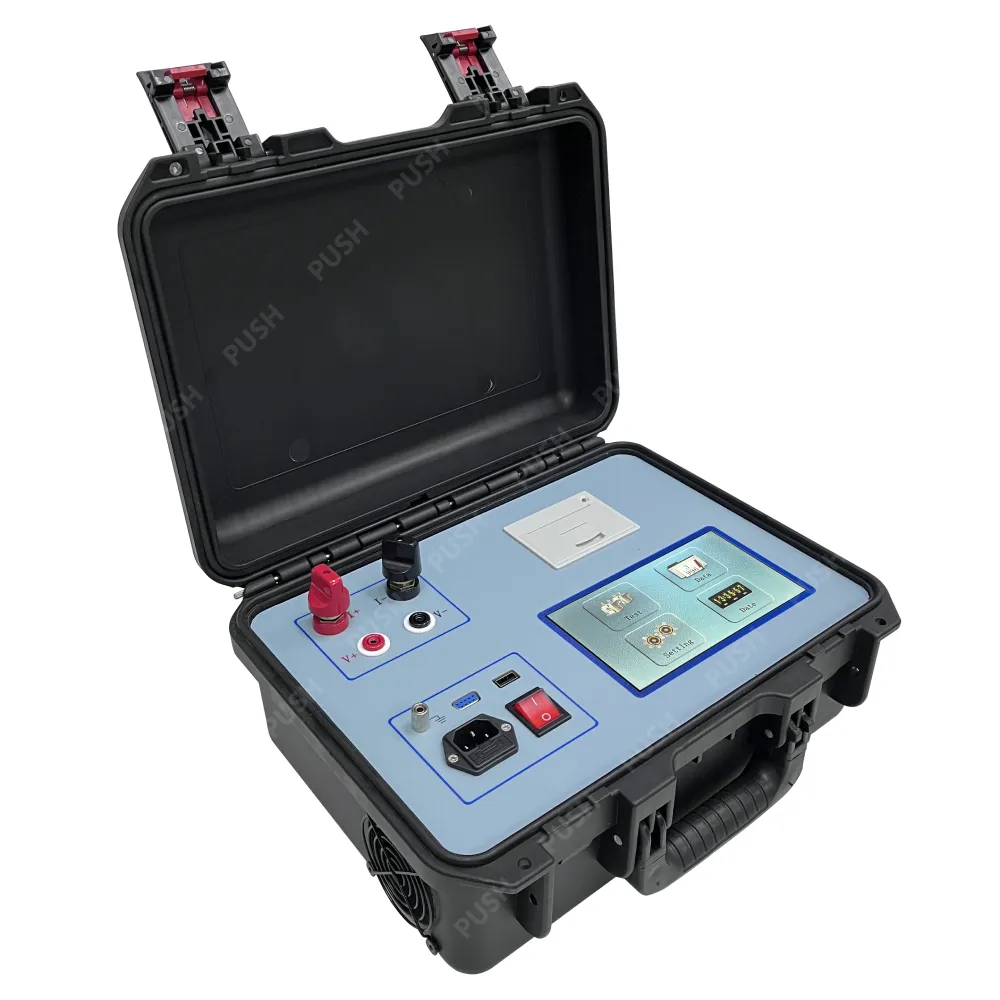 English
English


How to Effectively Use a Digital Insulation Tester for Electrical Safety Checks
Understanding the Use of Digital Insulation Testers A Comprehensive Guide
In the field of electrical engineering and maintenance, ensuring the safety and reliability of electrical systems is of paramount importance. One essential tool used to evaluate the integrity of insulation within electrical systems is the digital insulation tester. This article delves into the fundamentals of digital insulation testers, their applications, and best practices for their use.
What is a Digital Insulation Tester?
A digital insulation tester, commonly referred to as a megohmmeter, is an instrument designed to measure the insulation resistance of electrical equipment and cables. Unlike traditional multimeters, which measure resistance in ohms, insulation testers apply a high voltage (often between 250V to 5,000V) to the component being tested. This high voltage generates a current, which, in turn, provides a reading of how well the insulation resists electrical leakage.
Key Applications of Digital Insulation Testers
1. Electrical Safety Inspections Digital insulation testers are frequently used during routine safety inspections to ensure that electrical systems are functioning properly and meet safety standards. This is particularly crucial in preventing electrical shocks and fire hazards.
2. Preventative Maintenance Regular insulation testing can identify deterioration in insulation before it leads to equipment failure. This proactive approach helps in scheduling repairs and replacements, thus enhancing the longevity of equipment.
3. Commissioning New Equipment Before new electrical equipment is put into operation, digital insulation testers are used to verify that the insulation meets the specified standards. This ensures that the equipment will perform safely and reliably from the outset.
4. Troubleshooting If electrical systems exhibit signs of malfunction, insulation testers can diagnose insulation issues. By isolating sections of the circuit, technicians can identify faulty components that may need maintenance or replacement.
How to Use a Digital Insulation Tester
Using a digital insulation tester requires attention to detail and adherence to safety protocols. Here’s a step-by-step guide to its use
digital insulation tester use

1. Preparation Before conducting any tests, ensure that all electrical equipment is powered down and disconnected from any power supply. Safety gear, such as gloves and goggles, should be worn.
2. Connecting the Tester Connect the test leads to the insulation tester. One lead should be connected to the conductor of the component being tested, while the other should be attached to the ground or the casing.
3. Selecting the Voltage Choose the appropriate test voltage based on the specifications of the equipment. Different components may require different testing voltages for an accurate assessment.
4. Conducting the Test Activate the digital insulation tester. The device will apply the selected voltage and measure the resistance over a specified duration. It's important to note that the test duration might vary; typically, tests are conducted for 1 minute to ensure stable readings.
5. Interpreting Results After the test is complete, the digital display will show the insulation resistance value in megohms. A higher value indicates better insulation integrity, typically over 1 MΩ is considered acceptable for most applications. Values significantly lower than this may indicate a fault or deterioration.
6. Documenting Findings Always document the test results for future reference, maintenance scheduling, and safety compliance. Keeping a record will help in tracking the insulation health over time.
Best Practices for Using Digital Insulation Testers
- Regular Calibration Ensure that the insulation tester is regularly calibrated to maintain accuracy. - Follow Manufacturer’s Instructions Always adhere to the user manual’s guidelines for your specific model, as different testers may have unique features and operational considerations. - Environment Awareness Be mindful of environmental conditions, such as humidity and temperature, as these factors can affect insulation readings.
Conclusion
Digital insulation testers are vital tools for maintaining electrical safety and reliability. By enabling technicians to measure insulation resistance accurately, they help prevent hazardous situations and ensure that electrical systems operate optimally. Understanding how to use these testers effectively and maintaining best practices can significantly enhance the safety and longevity of electrical installations. As technology evolves, digital insulation testers will undoubtedly continue to play a crucial role in ensuring electrical integrity across various applications.
-
Differences between open cup flash point tester and closed cup flash point testerNewsOct.31,2024
-
The Reliable Load Tap ChangerNewsOct.23,2024
-
The Essential Guide to Hipot TestersNewsOct.23,2024
-
The Digital Insulation TesterNewsOct.23,2024
-
The Best Earth Loop Impedance Tester for SaleNewsOct.23,2024
-
Tan Delta Tester--The Essential Tool for Electrical Insulation TestingNewsOct.23,2024





